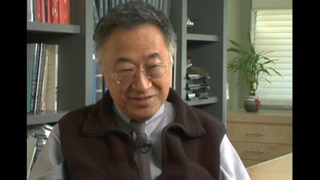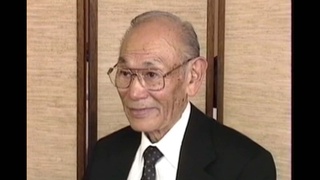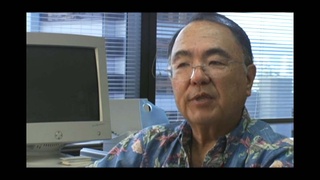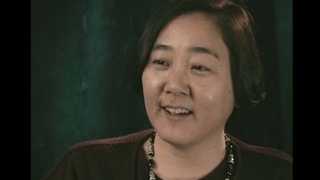Interviews
Rounding up Issei and Nikkei
The first 48 hours, I think about 3,000 Isseis were picked up. And the first ones were, were I don’t know, uh, Japanese businessmen, Japanese schoolteachers, martial arts teacher—they didn’t pick up all the fishermen then. The next group, every fisherman, 16 or over, were picked up.
And, of course, we see the papers blaring headlines, “Get the Japs Out!” and all that. So, we knew that we were, you know, all the Japanese were gonna go. And, I worked in San Pedro at the Woolworth, Five and Dime. There were hardly any Asians, Blacks or Chicanos that had jobs in San Pedro, and I didn’t know how long they were gonna keep me before they let me go. But, I knew I wouldn’t be able to hold on to that Five and Dime job.
And, well, I think, Japanese in other cities, they were all losing jobs—Long Beach, Los Angeles, all the places—and, of course, all of us called up each other, you know, friends saying, “What do you think’s gonna happen to us?” And, it was in the paper already, you know, that California’s wanted every Jap out and so…So, we knew that sooner or later we’re all gonna be sent out of California.
Date: June 16, 2003
Location: California, US
Interviewer: Karen Ishizuka, Akira Boch
Contributed by: Watase Media Arts Center, Japanese American National Museum.
Explore More Videos

Institutionalization as a bad aspect of camp
(1924-2018) Researcher, Activist

State Department records show concern for treatment of Japanese American internees
(1924-2018) Researcher, Activist

Different tension between East Coast and Los Angeles
Japanese American Creative designer living in Japan

Remembering December 7, 1941
(1923-2011) Lawyer, MIS veteran, founder of Francis and Sarah Sogi Foundation

Meeting Japanese Americans from the mainland in MIS
(1923-2011) Lawyer, MIS veteran, founder of Francis and Sarah Sogi Foundation

Awareness of concentration camps as a Japanese American
(1923-2011) Lawyer, MIS veteran, founder of Francis and Sarah Sogi Foundation

His experiences in Chicago after WWII
(b.1929) Pioneer medical researcher in tissue transfer and organ transplantation.

Manhunt
(1919 - 2005) Challenged the constitutionality of Executive Order 9066.

The Final Verdict
(1919 - 2005) Challenged the constitutionality of Executive Order 9066.


Less information about Hawai‘i in mainland
(b.1944) Founder of Kobayashi Group, LLC

A teenager's memories of how a local newspaper misrepresented Japanese Americans
(b. 1925) Draft resister

The role of the media in influencing people's opinions
(b. 1925) Draft resister

Reaction to a 1942 speech by Mike Masaoka, Japanese American Citizen League's National Secretary
(1915 - 2011) Nisei florist who resettled in New York City after WW II. Active in Japanese American civil rights movement

First learning about the incarceration experience in college
(b. 1955) Lawyer
